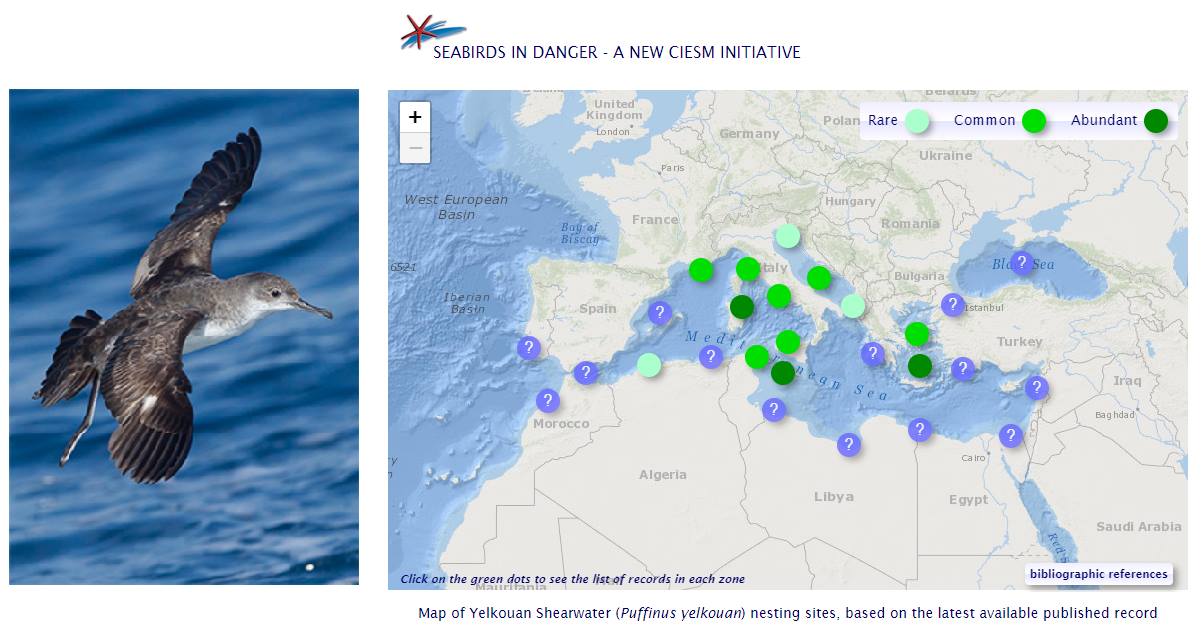
Red de Observadores de Aves y Vida Silvestre de Chile (ROC) is a non-governmental environmental organisation committed to the conservation of birds and biodiversity in Chile by undertaking research projects and conducting awareness raising among the public. The NGO works closely with Chilean environmental authorities in conducting species assessments and developing strategies for bird conservation.
ROC manages the Atacama Storm Petrel Project aimed at studying and conserving four species of Chilean desert-breeding storm petrels (Golondrinas del desierto): Markham's Hydrobates markhami (Near Threatened), Ringed H. hornbyi (Near Threatened), Wedge-rumped H. tethys (Least Concern) and White-vented or Elliot’s Oceanites gracilis (Data Deficient). The NGO has discovered the main breeding colonies for some of these species in the Atacama Desert, and is currently developing a conservation plan to address the threats they face, mainly associated with light pollution and the destruction of breeding sites.

Fernando Medrano uses playback of recorded calls in a search for Ringed Storm Petrels, 70 km inland in the Atacama Desert

Thousands of Markham's Storm Petrels are disorientated by light pollution in northern Chile every year
ROC is the local partner of eBird (the world’s largest biodiversity-related citizen science project) in Chile, a platform it strongly promoted to collect information towards the first breeding bird atlas for Chile. It also conducts regular waterfowl and shorebird censuses throughout the country, and runs several projects monitoring American Oystercatchers Haematopus palliatus, Snowy Plovers Charadrius nivosus and South American Painted Snipes Nycticryphes semicollaris, among others, and at some sites has implemented habitat management actions for conservation.

Ivo Tejeda, Executive Director, Red de Observadores de Aves y Vida Silvestre de Chile
Ivo Tejeda, ROC’s Executive Director, writes to ACAP Latest News: “Chile has one of the most extensive and diverse coastlines in the world. Our ocean nourished by the Humboldt Current allows more than half of the world's albatrosses to come to our seas. However, most of the Chilean population is ignorant of this fact, and of the threats driving these species towards their decline. For ROC, this year’s inaugural World Albatross Day on 19 June will be a perfect opportunity to spread knowledge among the general public about these extraordinary seabirds, their incredible characteristics, behaviours, and at the same time, raise awareness of the threats they face”.
********************************
La Red de Observadores de Aves y Vida Silvestre de Chile (ROC) es una organización no gubernamental cuya misión es la conservación de las aves y la biodiversidad en Chile, para lo cual desarrolla proyectos de investigación y genera una mayor conciencia en la sociedad en estos ámbitos. Trabaja de forma cercana con las autoridades chilenas evaluando el estado de conservación de especies y desarrollando estrategias para la conservación de las aves.
A través proyecto “Golondrinas del Desierto”, la ROC estudia y protege a cuatro especies de golondrinas de mar que se reproducen en el norte de Chile: la golondrina de mar negra Hydrobates markhami (Casi amenazada), de collar H. hornbyi (Casi amenazada), Peruana H. tethys (Preocupación menor) y chica Oceanites gracilis (Datos insuficientes). La ONG ha descubierto las principales colonias reproductivas para algunas de estas especies en el desierto de Atacama, y actualmente está elaborando un plan de conservación para abordar sus amenazas, asociadas principalmente a la contaminación lumínica y la destrucción de sus sitios de nidificación.

Rodrigo Silva, Pablo Gutiérrez and Ronny Peredo check a cavity with an endoscopic camera

A Markham's Storm Petrel chick in its nest, 20 km inland in northern Chile
La ROC es el socio local de eBird (el mayor proyecto mundial de ciencia ciudadana y biodiversidad), plataforma que ha promovido fuertemente con el fin de colectar información para el desarrollo del primer Atlas de las Aves Nidificantes de Chile. También realiza regularmente monitoreos de aves acuáticas y playeras de forma colaborativa a lo largo del país, y desarrolla varios otros proyectos de monitoreo de Pilpilén común Haematopus palliatus, Chorlo nevado Charadrius nivosus y Becacina pintada Nycticryphes semicollaris, entre otros; además, en algunos sitios ha implementado medidas de manejo de hábitat para la conservación.
Ivo Tejeda, Director Ejecutivo de la ROC, señala para ACAP Latest News: “Chile presenta una de las costas más extensas y diversas en el mundo. Nuestro océano, nutrido por la Corriente de Humboldt, permite que más de la mitad de las especies de albatros lleguen frente a la costa de nuestro país. Sin embargo, gran parte de la población no conoce sobre este hecho, así como acerca de las amenazas que están haciendo disminuir sus poblaciones. Para la ROC, este año inaugural del Día Mundial de los Albatros el 19 de junio es la oportunidad perfecta para dar a conocer al público general a estas extraordinarias aves marinas y sus increíbles características; y al mismo tiempo, generar una mayor conciencia sobre las amenazas que enfrentan”.
With thanks to Verónica López and Ivo Tejeda.
John Cooper, ACAP Information Office, 02 March 2020


 English
English  Français
Français  Español
Español 










